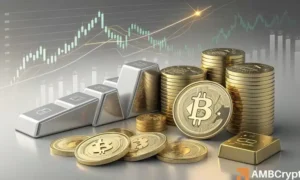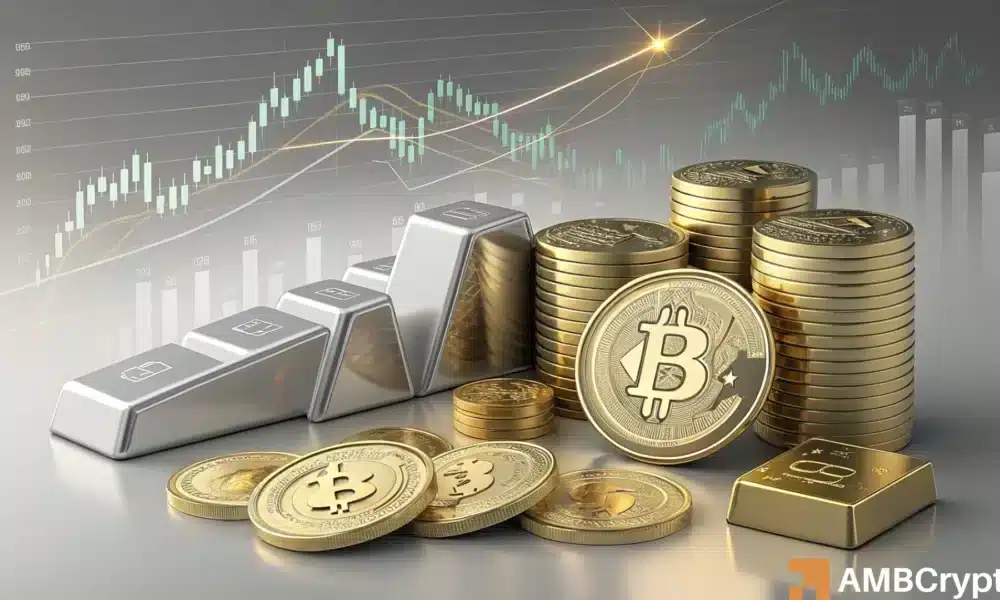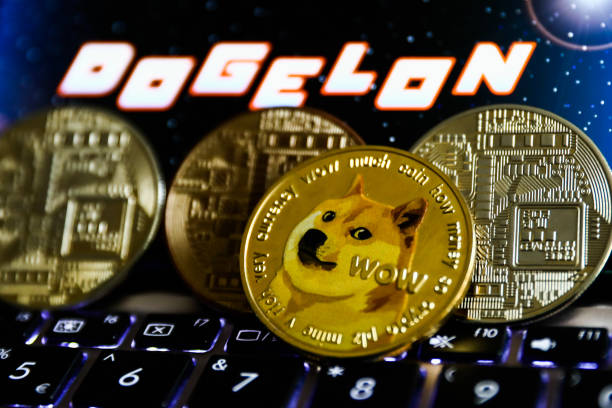Key Takeaways
Why are all asset classes rising at once?
Because the U.S. dollar is weakening and investors are chasing both growth and safety.
What does this mean for the economy?
It shows a shift toward an “asset-first” economy, where easy money and structural inflation make owning assets more important than earning income.
Everything’s going up: stocks, gold, Bitcoin [BTC], even silver.
At the same time, the U.S. dollar is sinking to its weakest point in decades. It’s quite strange that both risk and safety are rallying together. So, are things really booming, or is the dollar just breaking?
The unstoppable market rally
It’s been a record-breaking six months for global markets.
According to the Kobeissi Letter, the S&P 500 has surged nearly 40%, adding a staggering $16 trillion in market value, while the Nasdaq 100 has logged gains for six straight months.
This is a streak seen only six times since 1986.
Leading the charge are the Magnificent 7, pouring more than $100 billion per quarter into AI-driven capital expenditures as the tech boom accelerates.
This relentless rally has pushed equity valuations to historic highs, defying conventional cycles and leaving us to wonder how much higher markets can go before reality hits.
The dollar collapses and the Fed seems confused
The US dollar is down more than 10% YTD, marking its worst performance since 1973. Despite 4% annualized inflation and 2.9% Core PCE, the Federal Reserve is cutting rates, a move that’s baffling many investors.
Historically, rate cuts indicate economic weakness. But this time, they’re arriving amid sticky inflation.
Markets are losing faith in the Fed’s grip on long-term yields, with traders increasingly pricing in a prolonged period of easy money.
The result? A weaker dollar, stronger asset prices, and a growing sense that the old rules of monetary policy no longer apply.
Everything is an asset play
We’re entering a new phase where inflation hedges and AI-fueled optimism coexist, driving what looks like a full-blown asset rush.
Investors are pouring money into anything that can hold value or generate growth, from equities to gold and crypto.
Markets are clearly pricing in a future of structural inflation and persistently low real yields, reshaping what it means to invest or save.
But this shift comes with a cost; the bottom 50% of Americans now own just 2.5% of total wealth, while asset owners are reaping exponential gains.
In this “asset-first” economy, wealth is no longer just earned.













